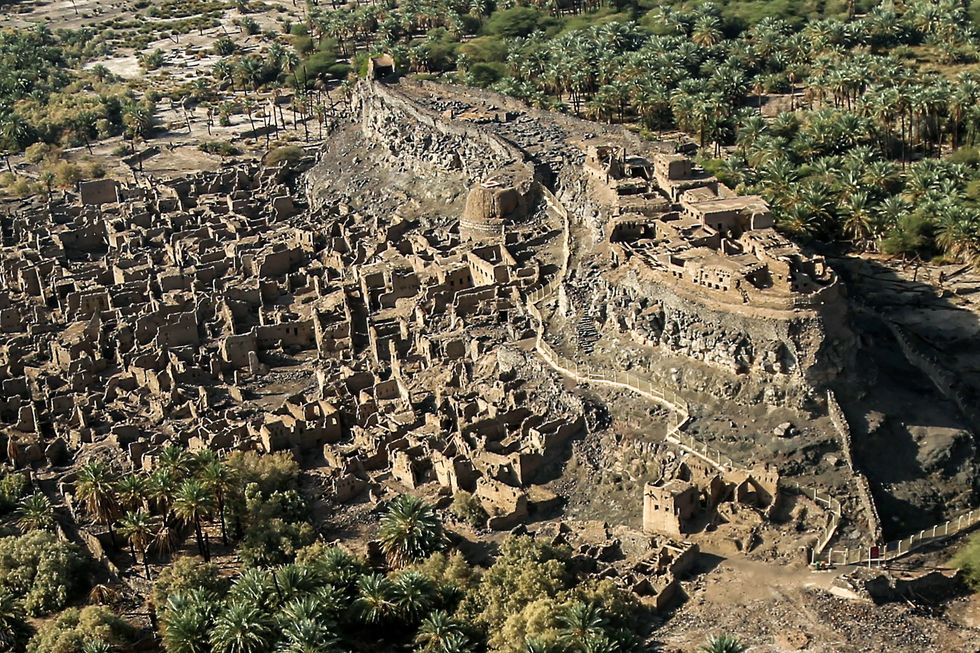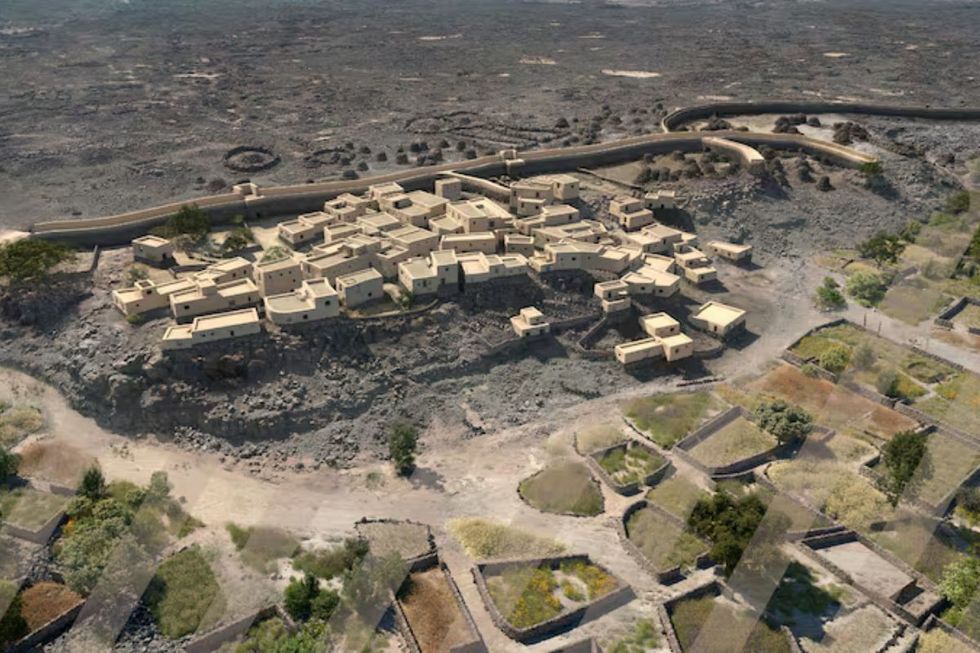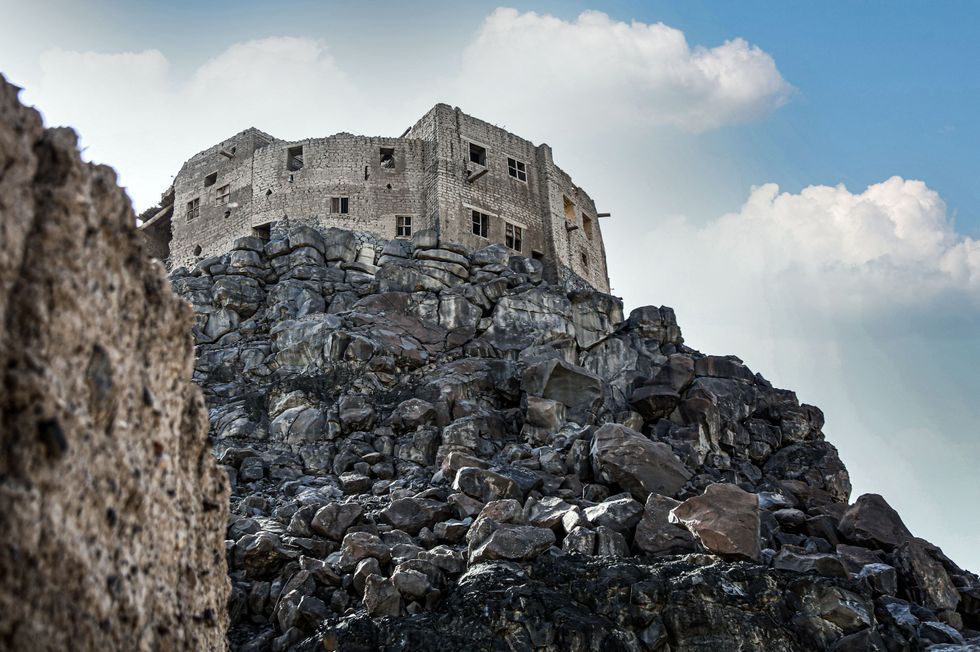Archaeologists have unearthed a 4,000-year-old fortified town located in the heart of an Arabian oasis.
The settlement, named al-Natah, was discovered hidden within the Khaybar oasis in the northwest of the Arabian Peninsula.
A French-Saudi team of researchers, led by archaeologist Guillaume Charloux, revealed their findings in a study published in the journal PLOS One.
The town, dating back to 2,400 BC during the early Bronze Age, was home to up to 500 residents.

An aerial view of an old fort in the Khaybar oasis in northwestern Saudi Arabia
GETTY
It was abandoned around a thousand years later, though the reason remains unknown.
Al-Natah’s discovery was made possible by the identification of an ancient 14.5-kilometre-long wall at the site.
The town’s features include a 2.6-hectare area with approximately 50 houses situated on a hill, protected by its own wall.
The settlement’s foundations were robust enough to support multi-storey homes.
LATEST DEVELOPMENTS:

A reconstruction image of the settlement
CHARLOUX
Archaeologist Guillaume Charloux told AFP that “no one knows why” the town was abandoned around 1,400 BC.
Charloux also described the ceramics as “very pretty but very simple”.
He later noted that it was “more modest, much slower, and quite specific to the northwest of Arabia” compared to city-states in Mesopotamia or Egypt.
Al-Natah, while significant, was relatively small compared to contemporaneous cities in Mesopotamia or Egypt.

A stock image of a fortified town in Saudi Arabia
GETTY
However, its discovery reveals an alternative path to urbanisation in the vast desert expanses of northwest Arabia.
The breakthrough comes after researchers accidentally recovered a huge Mayan city in a Mexican jungle.
Luke Auld-Thomas, a PhD student at Tulane university in the US, was analysing publicly available data when he found the buried world, which has since been named Valeriana.
The hidden city was uncovered using Lidar, a remote sensing method that is used to examine the surface of the earth. Archaeologists use the technology to try and identify previously unrecorded sites.